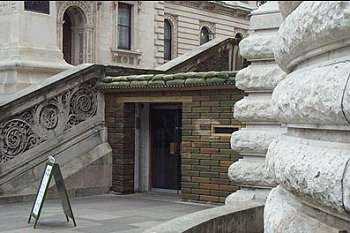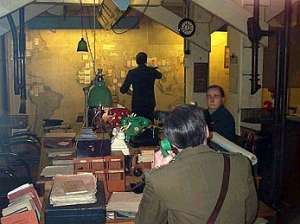Cabinet War Rooms


In 1940, as the bombs rained down on London, Winston Churchill, his Cabinet, his War Cabinet, his Intelligence organisation and his staff met below ground in a fortified underground complex in Whitehall known as The Cabinet War Rooms. They offered a shelter from air raids as well as a safe place to work, sleep and live for as long as necessary. Today visitors can see it just as it looked during the war years.
The concept for the rooms dates back to the early 1920s with the realisation and fear that in any new war, cities and government could be bombarded and destroyed from the air. It became increasingly important to protect the government of the day from such destruction. Many schemes were costed, constructed and evaluated in the 1930s but it was finally decided to use the basement chambers of the Office of Works building in George Street. The building had the strongest structure in Whitehall and was conveniently close to Number 10 Downing Street. Work started in 1938 and was completed on 27 August 1939, a week before the German invasion of Poland.
For six years these rooms housed and sheltered Churchill and his War Cabinet, the lights finally being switched off after the Japanese surrender in August 1945.
Today on exhibit is a suite of twenty rooms including the old Cabinet Room, Transatlantic Telephone Room, Map Room and the Prime Ministerís Room. Although basic, they are very evocative, with sound effects adding to the atmosphere.
9.30am until 6pm (last admission 5pm)
Location
Cabinet War Rooms
Clive Steps
King Charles Street
SW1
Telephone
+44 (0)20 7766 0120
Nearest Tube / Rail Station
Westminster
Bus Routes
3, 11, 12, 24, 53, 77a, 88, 109, 159, 184, 211
Access
The site is fully accessible to wheelchair users, with a lift from street level. Guide dogs are welcome.
